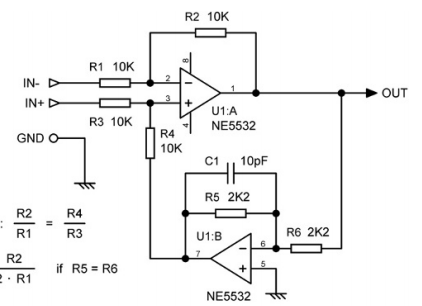Other Parts Discussed in Thread: RC4558
Hi team,
We can see that there is a super balanced circuit built with ne5532 in professional audio equipment.
- It is said that this circuit can keep the impedance of the two input ports equal to ensure that the CMRR is high enough and reduce the noise to a certain extent.
- Can you help to analyze the mechanism of this circuit to reduce noise and improve CMRR?
- Are there any other disadvantages of this circuit?
- It would be better if you could share the application note of the feedback circuit built by two op amps like this.

Best Regards
Wesley Huang


